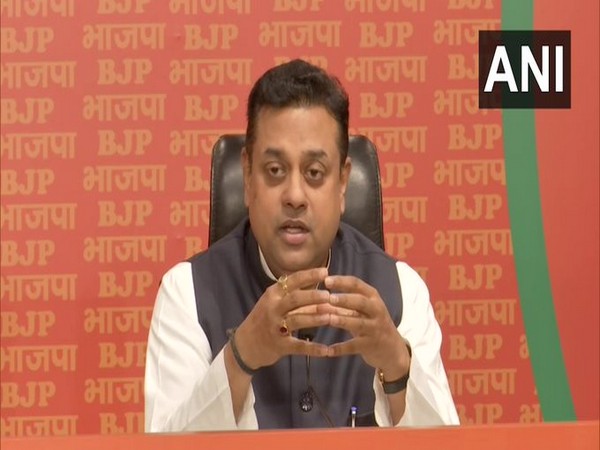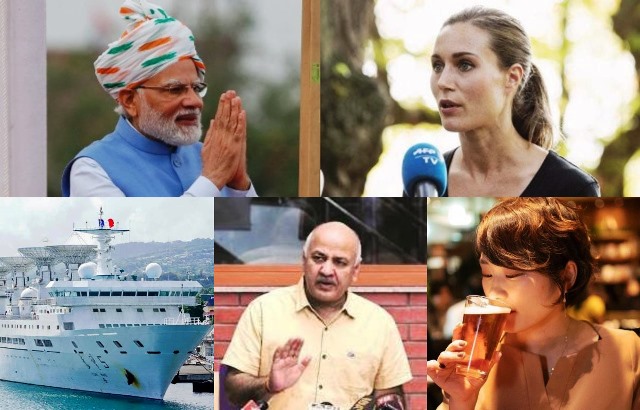At 75, India is still a young nation
The high point of the past week in India was the celebration on 15 August of the 75th anniversary of the nation’s Independence. While the highlight of the day was Prime Minister Narendra Modi’s address to the nation from Delhi’s historic Red Fort, equally notable was the success of the nationwide campaign, Har Ghar Tiranga, which urged all Indians to hoist the national flag as a symbol of patriotism.
In his speech, Prime Minister Modi, touched upon various aspects of the nation’s journey since it struggled to fight off the shackles of colonialism. He spoke about the invaluable contributions of freedom fighters and revolutionaries. He urged Indians to shake off the hangover of colonialism by not seeking approval from foreign powers but by judging things in the light of India’s own heritage and traditions. He spoke about empowering women, emphasised the need for achieving self-reliance; and emerging as a developed nation.
But the 75th anniversary of India’s Independence has another interesting aspect to it. For the first time in decades, India’s most prominent politicians, regardless of their ideology, beliefs or party colours, are those who have been born after 1947 when India achieved Independence. Take Prime Minister Modi himself. He was born in 1950, three years after Independence. Or India’s newly-elected President, Droupadi Murmu. She was born even later in 1958, which makes her 64.
Glance across the spectrum of India’s political parties, and you will come across leaders who are all younger than independent India. In Bihar, where he recently created a kerfuffle by exiting the National Democratic Alliance, chief minister Nitish Kumar is 71. Congress leader Rahul Gandhi is 52 and was born 23 years after Independence. His mother, Sonia Gandhi, president of the Congress party, though is probably among the few living Indian political leaders of consequence who is pre-Independence born. She was born in December 1946.
If you look elsewhere, Bahujan Samaj Party’s leader Mayawati, born in 1956, is 66; the feisty chief minister of West Bengal, Mamata Banerjee, is even younger at 59; and Delhi’s chief minister Arvind Kejriwal is only 54.
As we all know, India is a young nation and it has the largest youth population in the world. Over half of India’s population of around 1.4 billion is under 30. And as the age of India’s politicians begins to reflect that aspect of the nation’s demography, the average age of India’s prominent leaders will, unsurprisingly, also decline.
Another young politician creates ripples
Speaking of young politicians, in 2019 when Finland’s Sanna Marin became prime minister of her country (population: a little over 5.5 million), she was 34. She will turn 37 this November. Marin has quite a few achievements to her credit. Prominent among these is her much-lauded efforts to lead her government’s efforts during the Corona pandemic, which broke shortly after she had taken charge. Finland’s efforts to control the spread of the pandemic and gear up its healthcare infrastructure to minimise fatalities has won plaudits from around the world.
However, Marin now finds herself in the eye of a curious controversy. Last week a privately recorded video was leaked on social media that showed the young prime minister at a party with revellers, dancing and living it up. In the video, Marin and “her friends”, which included some Finnish celebrities, were seen drinking, dancing and singing. This has created a controversy in the small Nordic nation with many people questioning the propriety of a nation’s leader to party like a teenager and what example it sets for the nation’s citizens. Marin defended herself by saying it was a private party where she had not indulged in any illegal activities but had drunk alcohol moderately and danced, none of which is socially considered to be taboo.
Some observers pointed out that in the video, some people in the background were heard to refer to drugs such as cocaine. As a response, Marin has said she has never taken drugs and also stated that she had voluntarily taken a drug test after the controversy erupted last week.
The thing is that cultures differ. Not long ago, Marin was in yet another controversy when she had gone out clubbing with her husband and omitted to take her official cell phone with her. The cell phone in question had received messages about how she might have been exposed to people infected with the Coronavirus. Marin had then apologised and the controversy blew over. More recently, she was portrayed in social media posts, fashionably dressed and attending music festivals in Finland.
None of this, in Finnish culture, is anything that raises eyebrows. A public person’s private persona is respected and as long as there is nothing that can be considered as an illegal activity, no one really bothers about it.
The problem, however, is that when you are the prime minister of a country, you have an international image and status. Finland is in the process of joining NATO. The country shares a 1340-km border with Russia, which is in the midst of a prolonged conflict in Ukraine. Domestically, Finland, as are many other countries, is battling with rising costs of living, inflation, and economic hurdles. In that context, does it behove the Finnish prime minister, however young she might be, to be seen in videos partying like a high-schooler?
Wait, are the Chinese watching?
Yes, they probably are. Last week, the Indian authorities were concerned that a Chinese research and space-tracking vessel was docked in Sri Lanka’s Hambantota port and this could be the beginning of a concerted move by China to regularly use Sri Lanka as a base for surveillance in the region.
For all practical purposes, Hambantota is Chinese owned. It was built by China Merchants Port, a conglomerate headquartered in Hong Kong, and it owns 70% of the port’s equity capital. China has free access to the port. As is well known, China also has bases for “logistics” in the Cape of Horn in Africa, and easy access to the Karachi and Gwadar ports in Pakistan. China has a String of Pearls strategy, which is a network of military and commercial facilities and relationships along its sea lines. Ostensibly, this is a strategy to protect its trade interests.
India, obviously, sees this as a concern. With China building more bases in the Indian Ocean region, strategically it could be in a position to threaten India. What has especially bothered India is that the Sri Lankan port is freely used by China, perhaps for surveillance and non-commercial purposes, even though India (and not China) has come to the aid of the island nation with finance and aid when it recently faced acute economic crises.
CBI targets Delhi’s deputy CM
Drama is a de rigueur when it comes to Indian politics. On the same day that the New York Times carried a prominent article on how the Delhi government, under Manish Sisodia, its deputy chief minister who also oversees the education ministry, has achieved remarkable improvement in government-run schools, the Central Bureau of Investigation (CBI) raided Sisodia’s residence.
The raids were in connection with allegations that the city-state’s new liquor policy had violated rules and had irregularities.
The Delhi government, run by the Aam Aadmi Party (AAP) and the Union government, led by the Bharatiya Janata Party (BJP), have always had a confrontational relationship. Even as the raids and charges flew, BJP leaders accused the Delhi government of planting favourable stories in the foreign media by using money spun from a corrupt liquor policy.
Nine months after Delhi allowed private players to sell liquor in the state, the government withdrew the policy and reinstated the old system where only government agencies could sell liquor at the retail level. The reason for backtracking was partly economic. The private players faced huge licensing fees and price-gouging. The BJP has alleged that in the process of introducing a new policy and then withdrawing it, the Delhi government has made huge financial gains. An allegation that is yet unproved.
But what is most bizarre is the charge that the Delhi government has used these gains to enable planting favourable stories in international media! The drama goes on.
Japan wants people to drink more
One of the criticisms against the Delhi government’s ill-fated liquor policy was that it would encourage alcoholism because allowing private players would mean more competition and perhaps lower prices. In Indian culture, by and large, alcohol has a social stigma attached to it.
Apparently, not so in Japan. The Japanese government is worried that young people are not drinking enough. For one, the impact of Covid has meant fewer people go to bars and other drinking establishments. Moreover, Japan is an ageing country demographically and this means there are more old people in Japanese society than there are young. And an old, retired population is unlikely to spend much on alcohol. This has affected the beleaguered Japanese economy’s tax revenues.
So Japan has launched a campaign that has a competition inviting the public to suggest ways and means of making its citizens drink more alcohol. Different strokes, as they say, for different folks!

